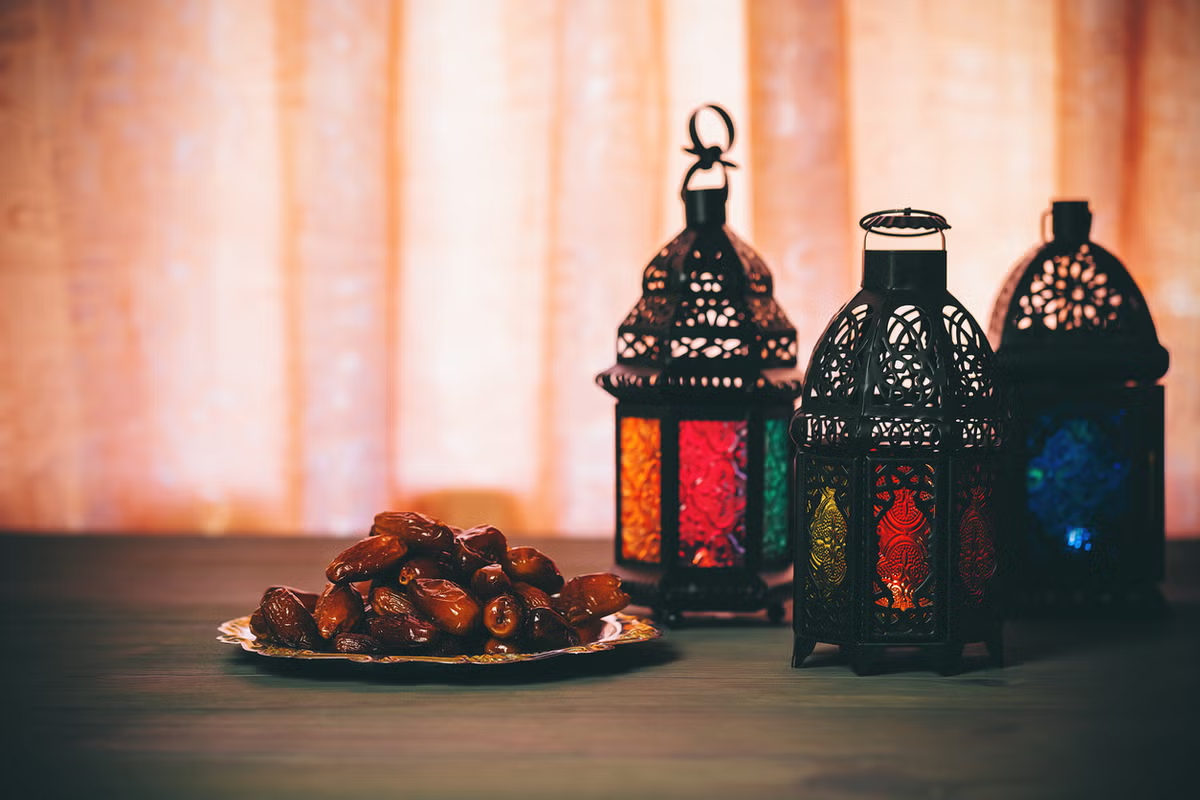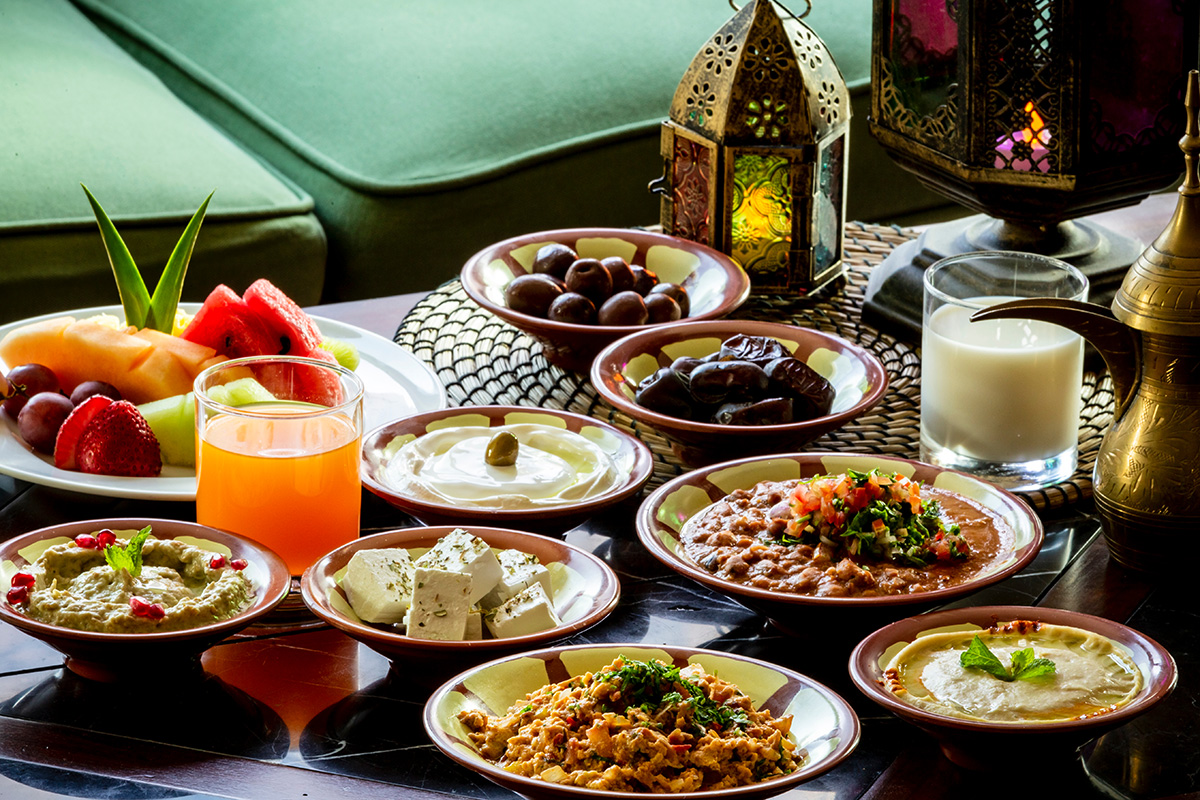- +201040914066
- info@quraaany.com


Many people in Ramadan want to Ramadan meal prep faster so there are many preparations before Ramadan besides religious preparations where If you are interested in spending less time preparing meals, saving time in the kitchen or choosing healthier foods, you need to try preparing meals. Preparing meals can range from preparing frozen fruit juices for breakfast to cooking whole magic meals for next week. There’s no one right way to prepare meals; it’s about what works best for you, and you don’t need to spend a full Ramadan day in the kitchen to get it done. Spending only 30 minutes planning and preparing meals will make it easy to eat well during the week.
Ramadan meal prep

In this guide on the preparation of Ramadan meal, we divide it into a few simple steps to help make meal planning and preparation easy for you and we can detail those steps in the following points:
Step 1: Make an inventory and shop
After planning your list, it’s time to make a shopping list. But before rushing to the grocery store, inventory your kitchen.
Stocking up on staples
The most important thing in Ramadan meal prep is stocking up on staples, where storing a variety of reliable goods in your pantry, such as dried herbs, seasoning mix and long-lasting whole grains such as brown rice and quinoa, simplifies meal preparation.
Canned beans and low-sodium broth, refrigerator staples such as eggs and pre-cooked chicken sausage, and some foods that can be frozen in the freezer can turn pre-prepared ingredients into meals in minutes. Like samosa fillings or samosas ready to fry, you can even draw on your entire meal plan on the staples in the pantry, as in the 6-day economic meal plan.
Make a better shopping list
Walk around the grocery store quickly using a list arranged by section. Keep a continuous stock of the foods you use frequently during weekly preparation, such as olive oil, onions or brown rice, and add them to your menu when necessary.
Check your container stock
Depending on your plan for the week, you’ll need a variety of storage containers, including glass containers, plastic lids, zipper storage bags and freezer bags. Consider the recommendations of the containers to prepare the following meals to pack the work lunch.
Read More: dua for depression
Step 2: Select the best way to prepare for you

Depending on your schedule, the meals you prefer to prepare beforehand and your cooking style, one way to prepare the following meals (or a bunch of them) may be the best for you:
Pre-prepared meals
The most important thing in Ramadan meal prep is preparing meals beforehand for those with little time to prepare meals during the week; cooking whole meals beforehand to reheat them at mealtime (such as a pot of soup or casserole) helps prepare rapid breakfasts on weekdays.
Batch cooking/freezing
Batch cooking before Ramadan is preparing multiple batches of recipes to be divided into parts and frozen for use in meals in the coming days. We can say that batch cooking or freezing is one of the most important things to Ramadan meal prep for example, double the chilli recipe or steam the extra rice to freeze and use within the whole month.
Individually divided meals
Those with specific health goals or looking for takeaway rest can choose to prepare foods and divide them into individual rations. Think about the prepared authorities in jars.
Ready-to-cook ingredients
If you prefer to cook meals just before serving, preparing ingredients (for example, pre-chopping onions and peppers for chillies) reduces kitchen time, which can be particularly useful on busy Ramadan days.
Read More: Ramadan reflections
Step 3: Make a plan (Meal Preparation Book)
Once you’ve determined which type or types of meal preparation you’ll benefit most from, spend a few minutes creating a simple plan to keep you organized. Consider the following while writing the menu and preparation plan:
Choose the meals you want to make
Are you looking to simplify your routine before Maghrib? Preparing fruit juices reduces the time you spend preparing breakfast, if busy evenings limit the time spent cooking during the week, consider Ramadan meal prep in advance that can be easily reheated.
Write your menu
When planning and preparing your menu, rely on some tried-out recipes you’ve cooked before, adding one or two new recipes.
If you’re not sure where to start, a batch of brown rice, a few chicken breasts and a tray of grilled vegetables can be easily assembled and plunged into the oven, we can say that when you write your menu, it’s one of the most important things in Ramadan meal prep.
Set a date for preparation
It’s important to devote some time to actual preparation; think about preparing meals the same day you shop and write a realistic preparation plan. It may not be reasonable to cook five meals in an hour, but you may have time to prepare certain ingredients for recipes. And if you like the challenge, set a pause to keep you on the job.
Step 4: Preparation and storage (plastic bag of rice)

We got to the fun part. Start making your meals; here are some useful tips to keep in mind before you start chopping:
Make the most of your time
Preheat the oven and prepare the ingredients that will be cooked first, Boil water for cereals that take longer to cook, like faro or brown rice; set the required cooking time on the kitchen timer.
If the recipes require the same ingredient, such as chopped onions, prepare the onions for both recipes simultaneously, then divide them for use as needed.
Pay attention to the duration of storage
If sliced vegetables such as onions and peppers are stored in sealed containers, they will remain valid for two to three days in the refrigerator. More powerful vegetables, such as chopped carrots and winter pumpkins, will remain valid for at least four days.
Lettuce and vegetables that have been washed, dried and kept in the refrigerator can remain fresh for up to a week. Cooked vegetables, cereals and dishes containing meat, poultry, seafood or eggs must be consumed within three to four days, ensuring that they are reheated to 165 degrees Fahrenheit.
Freeze foods properly for the best quality
Foods such as soups, chillies, poultry and cooked cereals can be easily frozen for use in future meals, during busy weeks like breakfast invitations, we can say that the most important thing in Ramadan meal prep is to freeze foods properly for the best quality; there’s nothing more satisfying than getting a ready meal out of the freezer.
Step 5: Enjoy pre-prepared fruits and vegetables
With a little practice, you will discover a meal preparation style that best suits you, whether you are preparing ingredients for one meal, preparing Ramadan breakfasts for the week, or cooking a double batch of chili to freeze for a month; any amount of time you spend preparing meals comes with great returns.
Conclusion
This article explained everything about the Ramadan meal prep in detail, as when you have good planning, you do not feel any fatigue or confusion during the days of Ramadan if you follow many steps explained in the previous article.